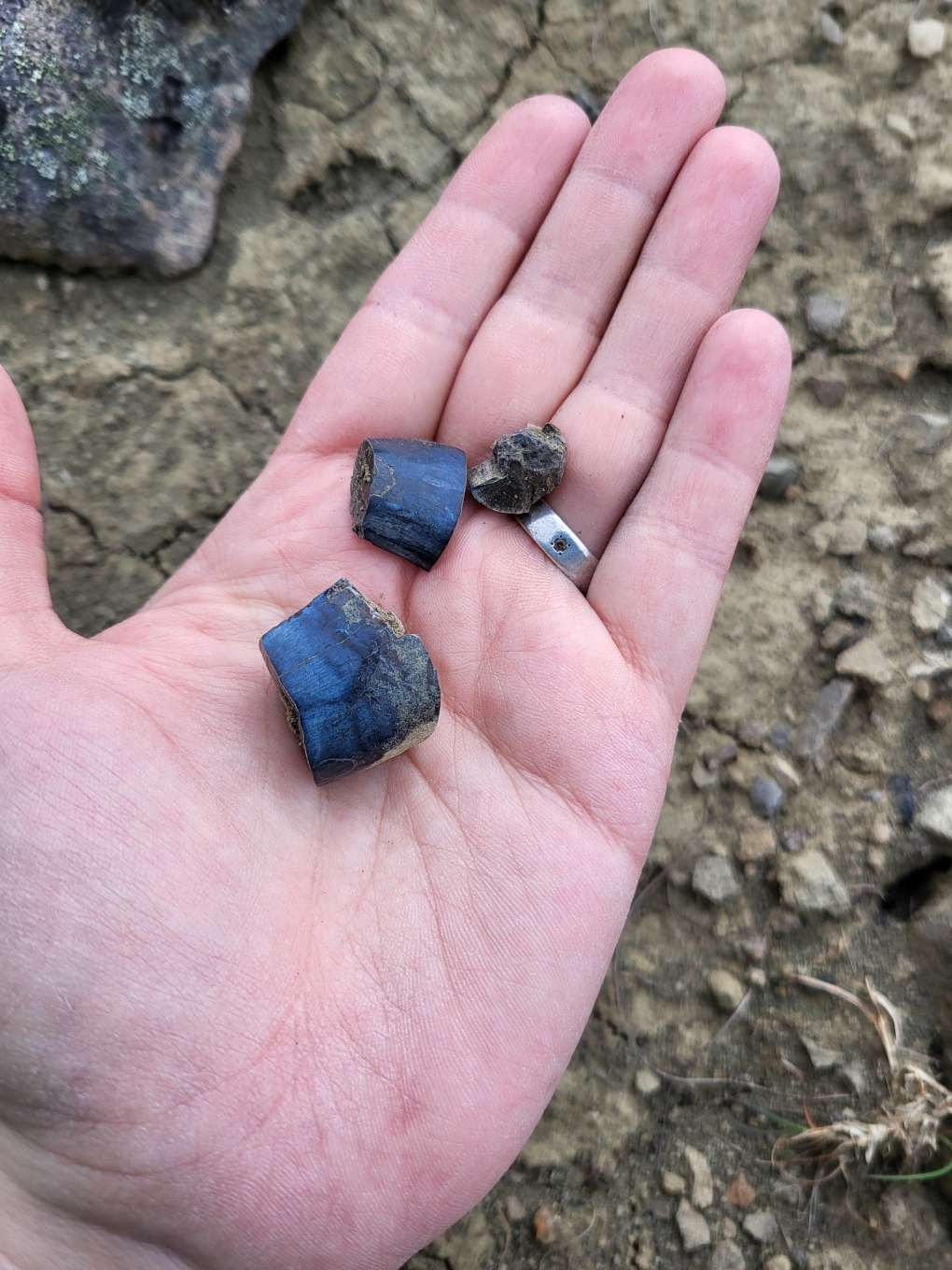Paleontologists from the Royal B.C. Museum have uncovered “a trove of extraordinary fossils” high in the mountains of northern B.C., the museum announced Thursday.
The fossils were found in Spatsizi Plateau Wilderness Provincial Park, at an altitude of roughly 2,000 metres.
Located in the Skeena Mountains, the park is roughly 500 kilometres north of Smithers and is best accessed by float plane, according to BC Parks.
Over the last three years, researchers – who accessed the fossil site by helicopter – have discovered “an array of well-preserved remains from various dinosaur species,” the museum said in a news release.
More than 90 fossils have been discovered, including teeth from a relative of Tyrannosaurus rex, bones from at least one large herbivore, teeth from a relative of Triceratops, and the foot of a small meat-eater.
The fossils are estimated to be 66 to 68 million years old and come from a geological area known as the Sustut Basin, according to the museum. Previously, only one species from the Sustut Basin – B.C.’s first unique dinosaur, Ferrisaurus sustutensis – had been discovered.
Victoria Arbour, the project’s lead researcher and curator of paleontology at the museum, described the site as “unlike any other in Canada” in the news release.
In an interview with CTV News, she elaborated on why that’s the case.
“Dinosaurs probably lived in all kinds of environments, it’s just that, sort of, the nature of fossilization means that our record is really patchy and we don’t always get fossils from all those different places,” Arbour explained.
Fossils are more commonly found in riverbeds and coastal basins, places where sediment accumulates and buries things that die.
“They need to die somewhere where they can get buried, and the top of a mountain isn’t a good place to get buried, really, because all of the rock and sand is washing away from there,” Arbour said.
Finding dinosaurs in a mountainous ecosystem – Arbour said the mountains in what is now northern B.C. were even taller during the late Cretaceous Period – offers the potential to fill in gaps in humanity’s understanding of prehistoric ecology.
“Because this is a very unusual place to have found dinosaurs, there’s a pretty good chance that these – at least some of these – might be species new to science,” Arbour said.
The museum said “extensive analysis and interpretation” will be required to determine the extent of the discovery, a process that will include painstakingly removing the bones from the surrounding rock and bringing them back to the museum’s under-construction PARC Campus in Colwood, B.C.
The plan is to make the research process accessible to the public through viewing windows at the Colwood campus.
“PARC” is an acronym that stands for “Provincial Archives, Research and Collections.” The facility is intended to serve as a secure repository for the museum’s collections and research.
Arbour said her team is excited to begin figuring out exactly what species they have found.
She explained that if the recovered fossils are from T. rex, Triceratops and other dinosaurs found throughout North America, it suggests those species were able to traverse the mountains and survive in a very different environment from where they are normally found.
 Lead researcher Victoria Arbour holds up pieces of a tyrannosaur tooth. (Royal B.C. Museum / Flickr.com)
Lead researcher Victoria Arbour holds up pieces of a tyrannosaur tooth. (Royal B.C. Museum / Flickr.com)
If the fossils are from species not previously identified or not previously found in B.C., it may suggest that those species were endemic to the prehistoric mountains.
“The one we’re most excited about is we’ve got a whole bunch of little bones from the foot and leg of a small predator,” Arbour said. “It could be something like a raptor-type dinosaur, like a velociraptor or some kind of small, feathery meat-eater. We’re pretty excited about that because those aren’t very common anywhere, and so finding something like that at this particular site feels really special to me.”
Royal B.C. Museum CEO Tracey Drake called the discovery “remarkable.”
“As the team continues their critical research, the museum will be thrilled to share their fascinating insights,” Drake said in the release. “This process reveals new facets of our province’s history and highlights the importance of ongoing research in uncovering the past.”
Funding and support for the research was provided by the Natural Sciences and Engineering Research Council of Canada, BC Parks and the Trebek Initiative, which is a collaboration between the Royal Canadian Geographical Society and the National Geographic Society that funds efforts to protect and preserve Canada’s natural landscapes, wildlife and cultural heritage, in memory of the late Jeopardy! host and Canadian geography enthusiast Alex Trebek.
With files from CTV Vancouver Island’s Brendan Strain and CTV National’s Andrew Johnson







